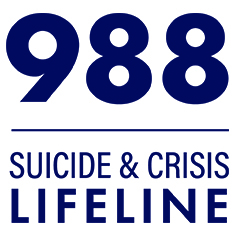Connectedness and Teenagers After a Suicidal Crisis
November 08, 2012
According to a new study from the University of Michigan, increases in family and peer connectedness can help protect youths who were hospitalized for a suicidal crisis from future attempts, ideation, and depression. The study results showed that “adolescents who reported greater improvements in peer connectedness [after being hospitalized] were half as likely to attempt suicide” during the 12 months following their hospitalization. Improvement in family connectedness did not provide the same protection against suicide attempts, but did help protect young people from suicidal ideation and depressive symptoms.
The authors suggest that families and friends of a youth undergoing a suicidal crisis will respond to the crisis by offering more explicit support to that young person. The young person in crisis will then feel more “connected” – that is, closer to, supported by, and able to confide in –his or her family or friends. The feeling of improved connectedness helps protect that young person against future suicide attempts, depression, and suicidal ideation. It is important to note that (1) the reductions in risk were associated with the relative improvement in connectedness that occurred in response to a crisis (rather than any absolute level of connectedness) and (2) the associations between the two types of connectedness (peer and family) and the three outcome measures (attempts, ideation, and depression) are complex. Neither peer nor family connectedness was shown to offer universal and long-lasting protection against all of the outcomes under all circumstances.
Peer connectedness was associated with a decrease in (1) suicide attempts for 12 months, (2) decreases in depression for three months, and (3) decreases in ideation for females for three months. The authors suggest that the increase in social support provided by peers in the weeks immediately following a suicidal crisis may lessen over time. A decrease in social support also results in a decrease in protection against depression and ideation. This theory is supported by the finding that an initial post-hospitalization increase in peer connectedness was associated with more severe ideation among girls 12 months later. The authors suggest that the girls at risk interpret the wearing-off of the initial increases in peer support as rejection, which contributes to the longer-term increase in ideation.
According to the study, the effects of increased family connectedness differ according to circumstance. An increase in family connectedness was associated with decreases in depression and suicidal ideation but was not associated with decreases in attempts. The authors theorize that attempt risk may be associated with the absolute rather than the relative level of family connectedness. The research also revealed that young people who had attempted suicide on several occasions prior to this hospitalization did not experience the same reductions in depressive symptoms and ideation associated with increases in family connectedness as did first-time attempters or ideators. The authors suggest that families of multiple attempters may become desensitized by the recurring crises and do not provide the relative bump in social support that occurs in the families of young people in crisis for the first time. The authors also report that there is evidence that families in which children attempt suicide more than once have weaker support systems, poorer functioning, and more mental parental illness than other families, which could also affect the level of protection offered by these families in the wake of a suicidal crisis.
The data used in this analysis were drawn from a study of a social support intervention for youth ages 13 to 17 years who had been admitted to inpatient psychiatric care because of a suicide attempt, persistent suicidal ideation, or ideation which included making a specific plan. Connectedness was measured by a questionnaire “which assesses the degree to which respondents perceive their relationships as close, confiding, satisfying, and supportive.”
Czyz, E. K., Liu, Z., & King, C. A. (2012). Social connectedness and one-year trajectories among suicidal adolescents following psychiatric hospitalization. Journal of Clinical Child & Adolescent Psychology, 41(2):214-26
SPRC Commentary
The study described above highlights both the complexities and the promise of new research into the relationship between social connectedness and suicide prevention. The CDC has based its latest strategic plan “building and strengthening connectedness or social bonds within and among persons, families, and communities.” SPRC’s Preventing Suicide: A Toolkit for High Schools includes a set of guidelines for facilitating a student’s return to school after a suicidal crisis or hospitalization, as well as other information on the role that schools can play in preventing suicide among the student body.
